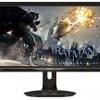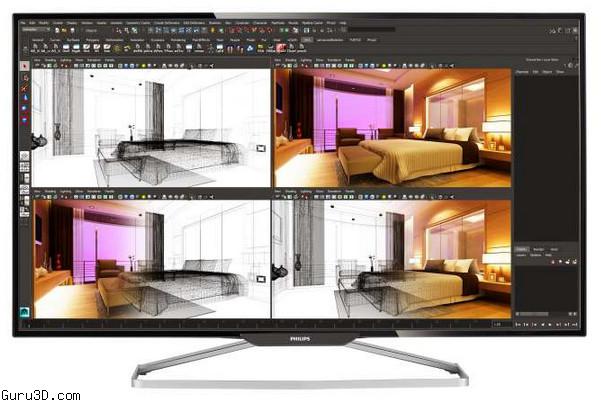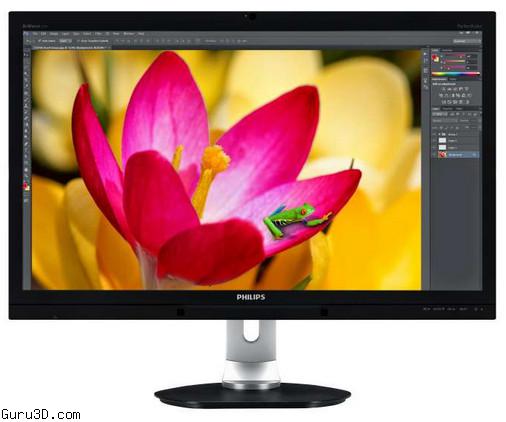MMD, the leading technology company and brand license partner for Philips Monitors, unveils at IFA 2014 various innovations which are attuned to the way people work and live - such as the quest for health and well-being, a desire to be enthralled and entertained, and a wish for style and elegance in home and work environments. IFA takes place from 5 to 10 September in Berlin.
Shifting blue light toward the healthier end of the spectrum
With people spending more time than ever interacting with digital devices, continuous blue-light exposure through extended screen time poses a potential risk of long-term damage to eyesight. Making its debut appearance at IFA 2014, the brand-new Philips SoftBlue display reduces eye fatigue by eliminating emissions of blue light at harmful wavelengths, helping to mitigate the negative impact on eyes and improve well-being. Unlike software-based approaches, the SoftBlue display works using a new technology which changes the peak of the blue-chip in the LED. It does this without detracting from colour fidelity or brightness, so users can enjoy accustomed image quality without the prolonged detrimental effect of blue-light exposure.
Amazing gaming
Taking the game up a level for serious players, MMD is showcasing the 144 Hz Gaming Monitor 272G5DYEB with NVIDIA G-SYNC technology. By letting the graphics processing unit (GPU) control its refresh, this 27-inch display delivers ultra-smooth image motion that includes a more complete trajectory of moving objects - including the critical images that are skipped on displays with standard refresh rates. At 144 Hz, the screen content updates nearly two and a half times faster than a standard monitor, giving players the split-second response speed to target objects more accurately and take their game to the next level.
From after-hours to business hours
Designed with graphics professionals in mind, the new 27-inch Philips 272P4A display with Adobe RGB technology is also on view. With Quad HD (QHD) resolution of 2560 x 1440, the display offers the clarity of detail that is vital in applications that rely on pixel-precise accuracy. With Adobe RGB on board, the display can render far more colours than a regular monitor. Users also have the certainty of colour consistency on every device in the production workflow - for example, images loaded from digital cameras have exactly the same colors when rendered on the display. This saves time and effort for photographers, graphic designers, video editors and other professionals involved in the workflow.
Performance with impressive looks
Excellent technology and performance do not mean compromising on looks - as the new 27-inch 275C5 display shows. Apart from the iconic Moda 2 design in glossy white, the new display features Bluetooth for a tidy, cable-free tabletop or desktop and also supports Miracast. With two powerful 7W speakers for audio performance, the 275C5 can work as a stand-alone music station for the living room.
Rounding out the show are Smart All-in-One touch displays - stand-alone multimedia systems which bring the exciting Android app world to larger screens - and the new 21:9 Panoramic Ultra Wide Screen, with a resolution of 3440 x 1440 for heavy-duty multitasking and data applications.
Visitors to the Philips stand in Hall 22 will have ample opportunity to try out all these displays and see how they perform.




